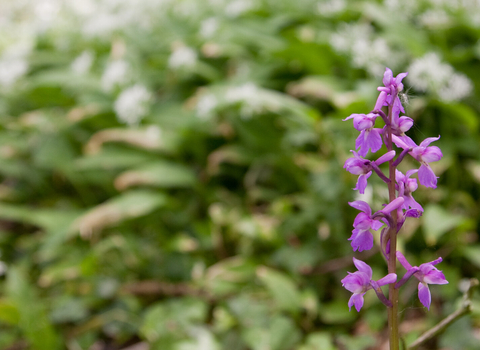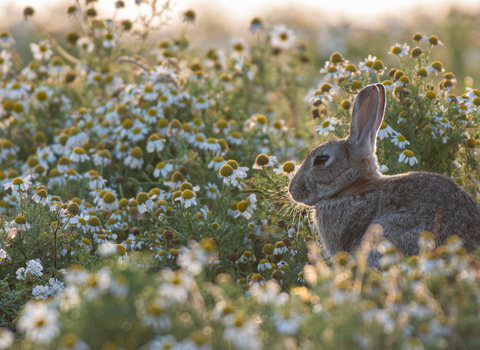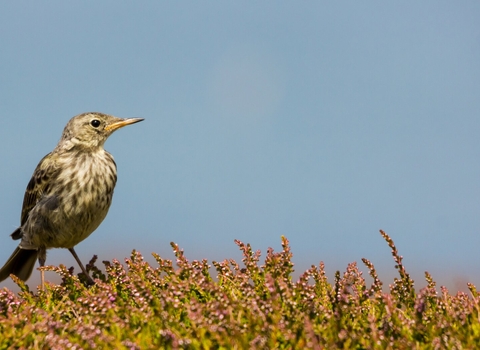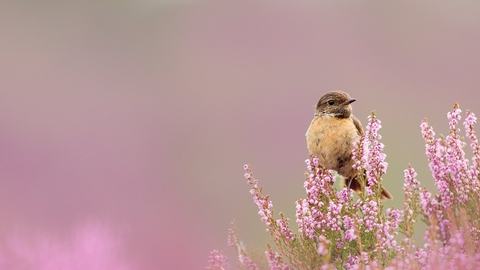
Ben Hall/2020VISION
Overton Mere, Overton, Gower, Swansea
Location
Know before you go
Dogs
When to visit
Amseroedd agor
Open access reserve.Amser gorau i ymweld
Spring and summer.Am dan y warchodfa
The reserve is named after the bay over which it looks. The reserve has almost the full range of South Gower Coast habitats ranging from Hawthorn and Blackthorn scrub, through mixed Gorse and heath, open limestone scree, to improved and unimproved limestone grassland.
The areas of improved grassland are to be found on the plateau area closest to the sea shore which is a fossil raised beach dating back to the last Ice Age. The improvement came about when the previous owner ploughed these areas for potatoes, and they were subsequently reseeded with grass.
Lime-loving flowers such as Common Rock-rose, Milkwort, Eyebright, and Thyme flourish while Linnet, Meadow Pipit, and Stonechat search the grassland and scrub for food. Oystercatcher and other shore birds can be seen in the Mere at low tide.
Bloody-nosed Beetle and Green Tiger Beetle are regularly to be found on the path in summer, the rare Silky Wave Moth hides in the Gorse, and an assemblage of solitary bees and wasps nest in tunnels dug in the soft sediments of the wave cut platform.
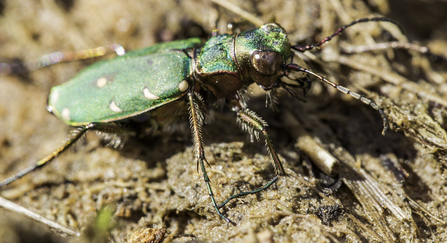
Chris Lawrence

